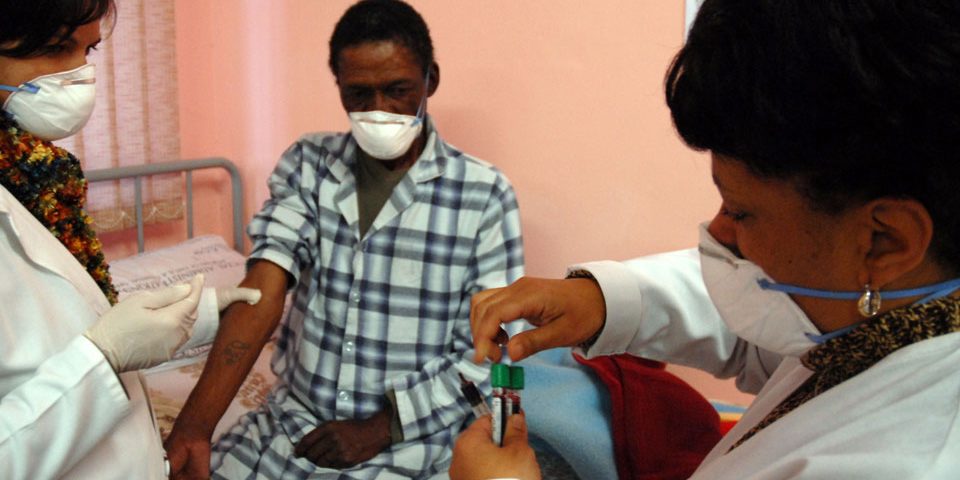Long-term outcomes of patients with extensively drug-resistant tuberculosis in South Africa: a cohort study
17th January 2014TB patient treatment
17th January 2014Patients with contagious and highly drug-resistant tuberculosis (TB) are being routinely discharged from hospitals across South Africa, exposing others in their communities to potentially deadly infections, researchers said on Friday.
In a study in the medical journal The Lancet, they said the patients, with strains of TB known as extensively-drug resistant (XDR) and totally drug resistant (TDR) TB, have exhausted all available treatment options and are sent home.
“These patients can survive for months or even years and are contributing to the community-based spread of XDR-TB,” said Keertan Dheda, who led the study at the University of Cape Town’s department of medicine.
Tuberculosis infects the lungs and can spread through coughing and sneezing. In recent years, drug-resistant strains have spread around the world, batting off standard antibiotics and posing an increasingly urgent public health threat.
The World Health Organisation (WHO) estimates that in Eastern Europe, Asia and South Africa, 450,000 people have MDR-TB, and around half of these will fail to respond to existing treatments.
Dheda’s team followed 107 patients with XDR-TB from three provinces in South Africa between March 2008 and August 2012 to establish their fate.
They also took samples from 56 patients and tested them to find out which and how many of 10 first- and second-line anti-TB drugs they were susceptible to.
Despite being treated intensively with an average of eight anti-tuberculosis drugs, many of the patients fared poorly, with high rates of treatment failure and death. Five years after treatment initiation, only 12 of the patients had favourable outcomes and 74 percent had died.
Discharged while infectious
The researchers found that almost two-thirds of the tested patients had resistance to at least eight drugs, and there was one case of totally drug-resistant TB that was not susceptible to any of the 10 drugs tested.
More worrisome, Dheda said, was that of the XDR-TB patients discharged into the general community, some 42 percent had failed to get better on treatment and were testing positive for active TB, and of these almost a third were at high risk of transmitting the disease.
The patients also survived in the community for an average of 20 months – plenty of time to infect others. When people with lung TB cough, sneeze or spit, they propel the TB germs into the air. Another person needs to inhale only a few of these germs to become infected.
“Alarmingly, we have shown for the first time that… treatment failure and discharge of such patients into the wider community is occurring systematically on a country-wide level in South Africa,” Dheda said in a statement about the findings.
In one case where the researchers followed a genetic trail of transmission, they found that a patient with XDR-TB who was discharged after failing treatment went on to infect his brother, who also eventually died.
Dheda said the reason many TB patients are being sent away from hospitals appeared to be lack of bed space in designated tuberculosis hospitals. “And alternative long-term residential and palliative care facilities are scarce.”
Commenting on the findings in The Lancet, Max O’Donnell from New York’s Albert Einstein College of Medicine in the United States said they should serve as an “urgent alarm”.
“MDR-TB (multi-drug-resistant TB) in all its forms is an out-of-control problem with potentially vast and devastating consequences for global public health,” he wrote. “The situation regarding MDR and XDR-TB is bleak.”
Read more eNCA, 17 January 2014



